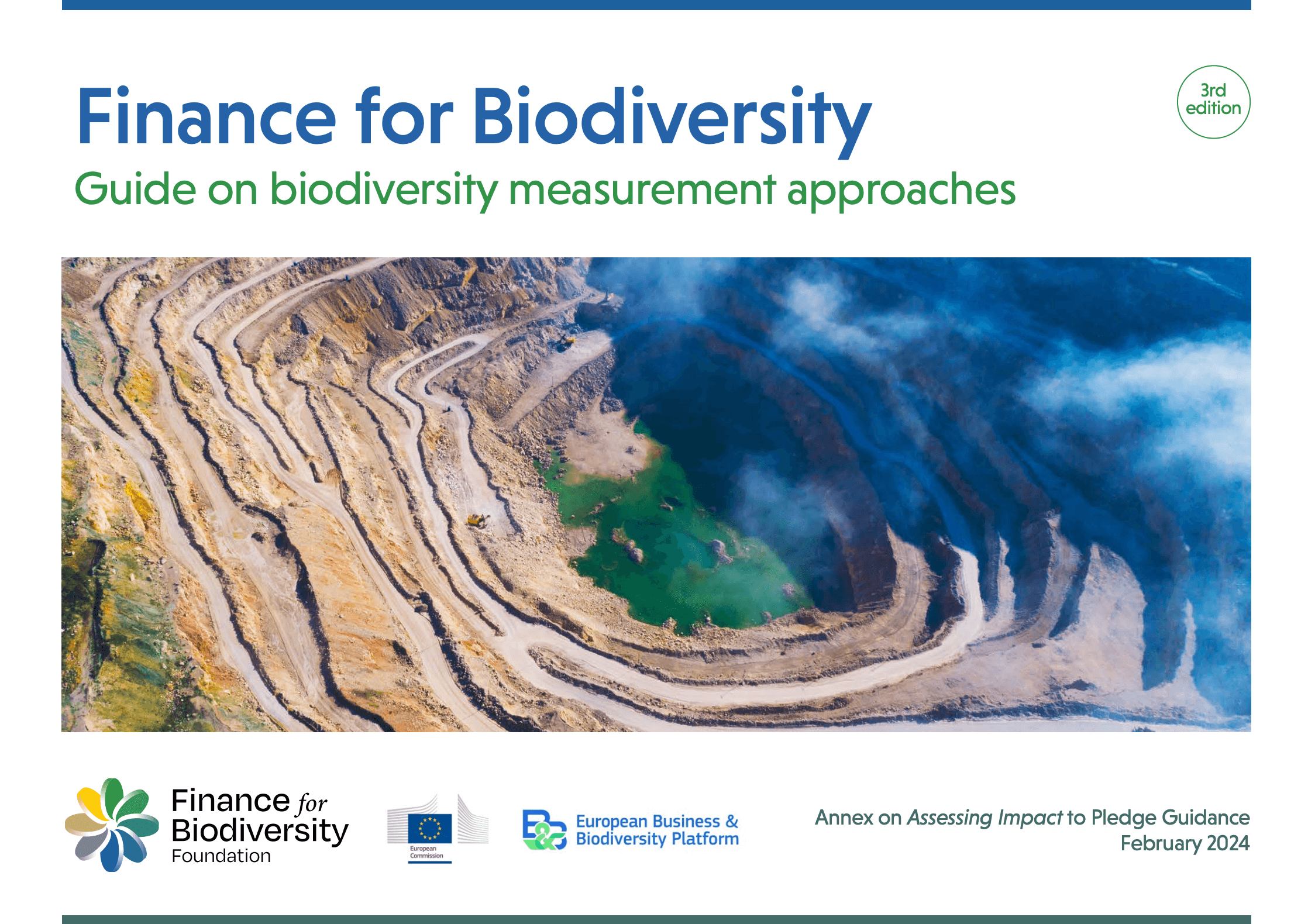Guide on biodiversity measurement approaches
Detalles
| Now in its third edition, this Finance for Biodiversity Foundation toolkit includes: - Two new tools: Nature and Biodiversity Metrics (MSCI) and Biodiversity Impact Assessment Tool (ISS ESG). - Recategorization of tools following current frameworks, such as the TNFD LEAP approach. - Up-to-date description, details, and links of all tools, including TNFD reporting suitability. - Update of the section "Types and sources of data on biodiversity". - Overview of nine biodiversity measurement tools, classified into three distinct groups, to measure financial institutions' interactions with biodiversity: - Sectoral analysis approaches: o ENCORE - Exploring Natural Capital Opportunities, Risks and Exposure (UNEP-WCMC, UNEP-FI and NCFA). - Location selection approaches: o IBAT - Integrated Biodiversity Assessment Tool (BirdLife International, Conservation International, IUCN, UNEP-WCMC) o NBM - Nature and Biodiversity Metrics (MSCI) - Dependency and impact assessment: o BFFI - Biodiversity Footprint Financial Institutions (CREM and PRé Sustainability, together with ASN Bank) o BIAT - Biodiversity Impact Assessment Tool (ISS ESG) o BIA-GBS - Biodiversity Impact Analytics powered by the Global Biodiversity Score (Carbon4Finance and CDC Biodiversité) o CBF - Corporate Biodiversity Footprint (Iceberg Datalab and I Care Consult as a scientific partner) o GBSFI - Global Biodiversity Score for Financial Institutions (CDC Biodiversité) o GID - Global Impact Database, Biodiversity Impact Data (Impact Institute) The publication highlights the suitability of each tool for specific organizational focus areas, business applications, and asset categories, while outlining their respective strengths and limitations. In addition, it provides detailed information on the data and resource requirements of each tool, along with an overview of the scopes and pressures covered. Measuring the impact on biodiversity is an important step for financial institutions As biodiversity loss becomes an increasingly urgent challenge, financial institutions are looking for ways to quantify the impact and dependence of their financial and investment activities on biodiversity. For this reason, impact assessment is one of the five commitments of the "Finance for Biodiversity Pledge". This guide serves as an annex to the section on impact assessment of the main guidance document of the Finance for Biodiversity Commitment. The content of the guide is based on several sources. The format of the "Guide on Approaches to Biodiversity Measurement" is based on the series of reports entitled "Evaluation of Approaches to Biodiversity Measurement", developed by the working group on methods of the EU Business & Biodiversity Platform, and collects the most relevant information for financial institutions. The Finance working group, together with Finance for Biodiversity, has made the information accessible to financial institutions thanks to the way the guide is structured. |
Recursos relacionados

2023
Raising the ambition for nature. A fashion, textile and apparel sector primer on the first
Este manual ofrece una introducción a los objetivos basados en la ciencia para la naturaleza, ayudando a las organizaciones de…

The Underlying causes of biodiversity loss and the determinants of transformative change and options for achieving the 2050 vision for biodiversity
The IPBES Global Assessment Report on Biodiversity and Ecosystem Services focuses on transformative change that deliberately contributes to achieving the…

Building narratives through nature data
Manual for the application of spatial data and metrics to evaluate locations and adapt nature strategies.


